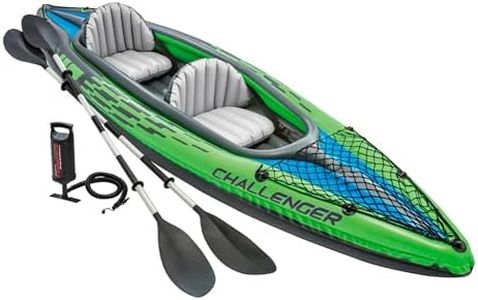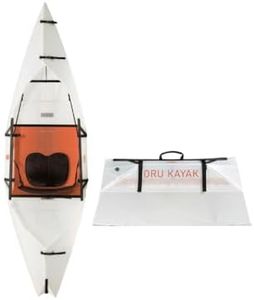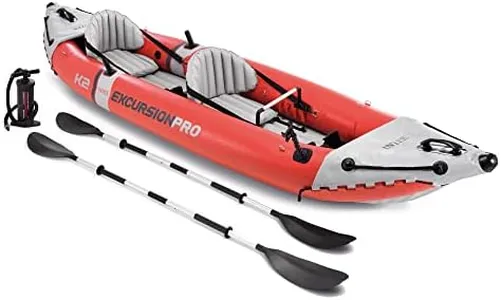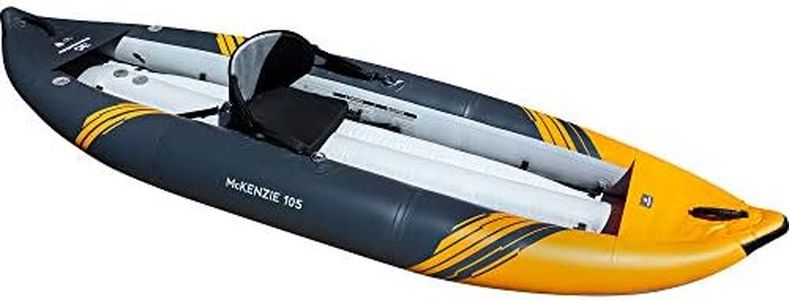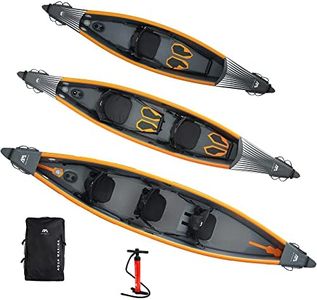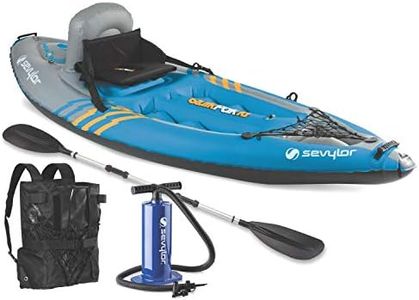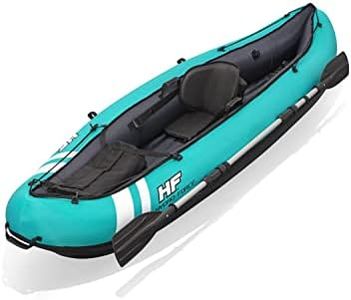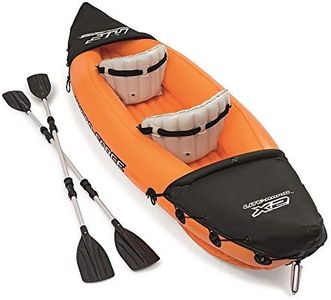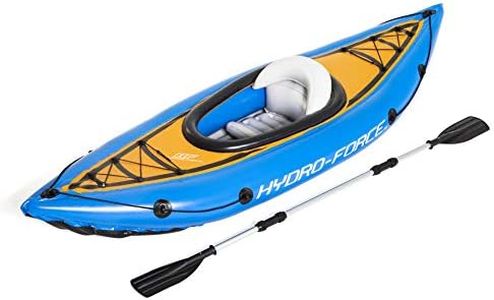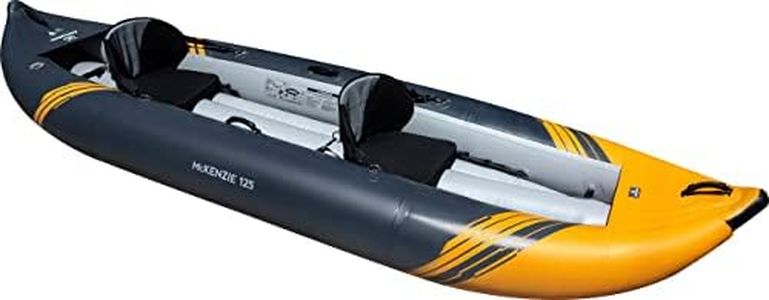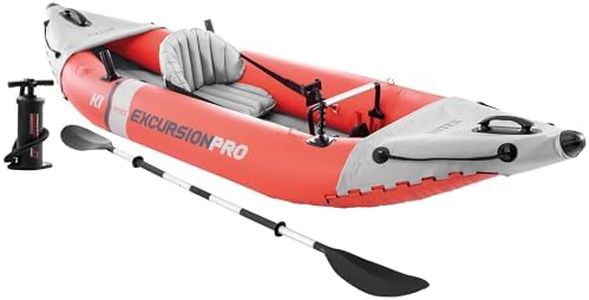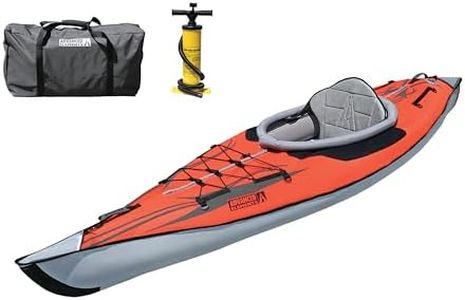We Use CookiesWe use cookies to enhance the security, performance,
functionality and for analytical and promotional activities. By continuing to browse this site you
are agreeing to our privacy policy
10 Best Recreational Kayaks
From leading brands and best sellers available on the web.Buying Guide for the Best Recreational Kayaks
Choosing a recreational kayak can be an enjoyable process when you know what to look for. These kayaks are meant for calm waters like lakes, gentle rivers, or bays, making them ideal for beginners and casual paddlers. The right kayak should be comfortable for you, easy to maneuver, and able to handle the types of waters you plan to paddle on. Taking time to understand the important features will help you find a kayak that matches your needs, skills, and the locations where you'll use it.LengthThe length of a recreational kayak affects its speed, tracking, and maneuverability. Shorter kayaks (typically 8-10 feet) are easier to turn and transport, making them suitable for kids or beginners paddling in small lakes or ponds. Longer kayaks (11-14 feet) tend to go faster and track straighter, which is useful for covering greater distances on larger bodies of water. When choosing the right length, consider where you will be paddling most often – shorter for small, twisty areas and longer for open water where you want to go further with less effort.
Width (Beam)Width, also known as beam, influences a kayak’s stability. Wider kayaks (over 28 inches) feel more stable and are less likely to tip, which is reassuring for beginners or anyone nervous about wobbling. Narrower kayaks are generally faster, but less stable side-to-side. If comfort and stability are your priority—such as for relaxed outings or photography—a wider kayak is ideal. If you’re aiming for efficiency and a brisker paddle, a slightly narrower design might suit you.
Weight CapacityWeight capacity measures how much combined weight the kayak can safely hold, including your body, gear, and any extra items you bring. Choosing a kayak with a weight limit well above your total expected load ensures better performance and keeps the kayak stable and buoyant. If you plan to bring along picnic supplies, fishing gear, or a pet, tally up those weights too and select a kayak with enough margin for safety and comfort.
MaterialRecreational kayaks are commonly made from materials like polyethylene plastic, composite, or inflatable fabrics. Plastic kayaks are durable and resistant to impact, making them a popular choice for beginners, though they can be heavier. Composite (such as fiberglass) kayaks are lighter and glide more efficiently, but are more expensive and can be less tough against knocks. Inflatable kayaks are very portable and easy to store but may not track as well or be as durable as rigid kayaks. Think about how you’ll store and transport your kayak, as well as where you’ll use it most, when weighing this feature.
Cockpit SizeThe cockpit is where you sit in the kayak, and its size matters for both comfort and ease of entry and exit. Larger cockpits make it easy to get in and out, provide more legroom, and can feel less confining, especially if you’re new to kayaking or want to paddle with a child or pet. Smaller cockpits offer better protection from water and can make you feel more connected to the kayak, which some seasoned paddlers prefer. Choose based on what feels comfortable to you and how agile you want to be when getting in or out of the kayak.
Seat Comfort and AdjustabilityA comfortable seat can make a big difference in how much you enjoy your kayaking experience, especially on longer outings. Look for seats with good back support, padding, and adjustable features so you can find a position that suits you. If possible, try sitting in a kayak before you buy it to see how the seat feels. Prioritize seat adjustability and support if you have back issues or plan to spend multiple hours on the water.
